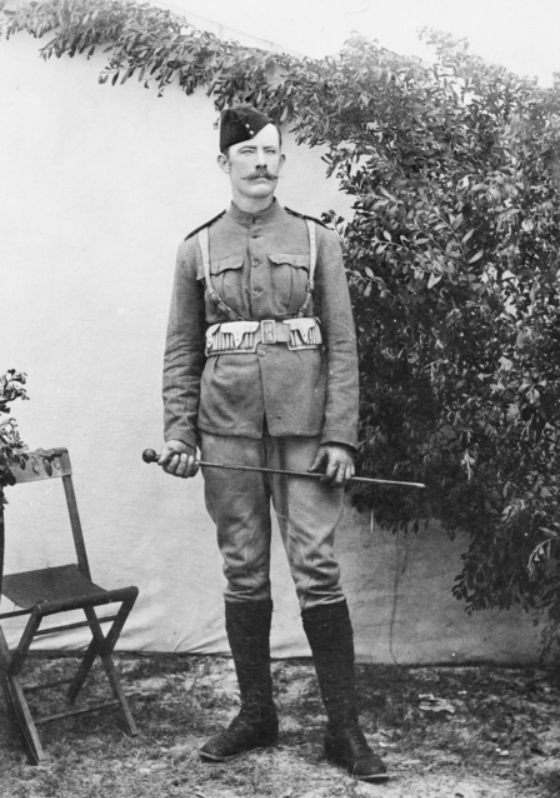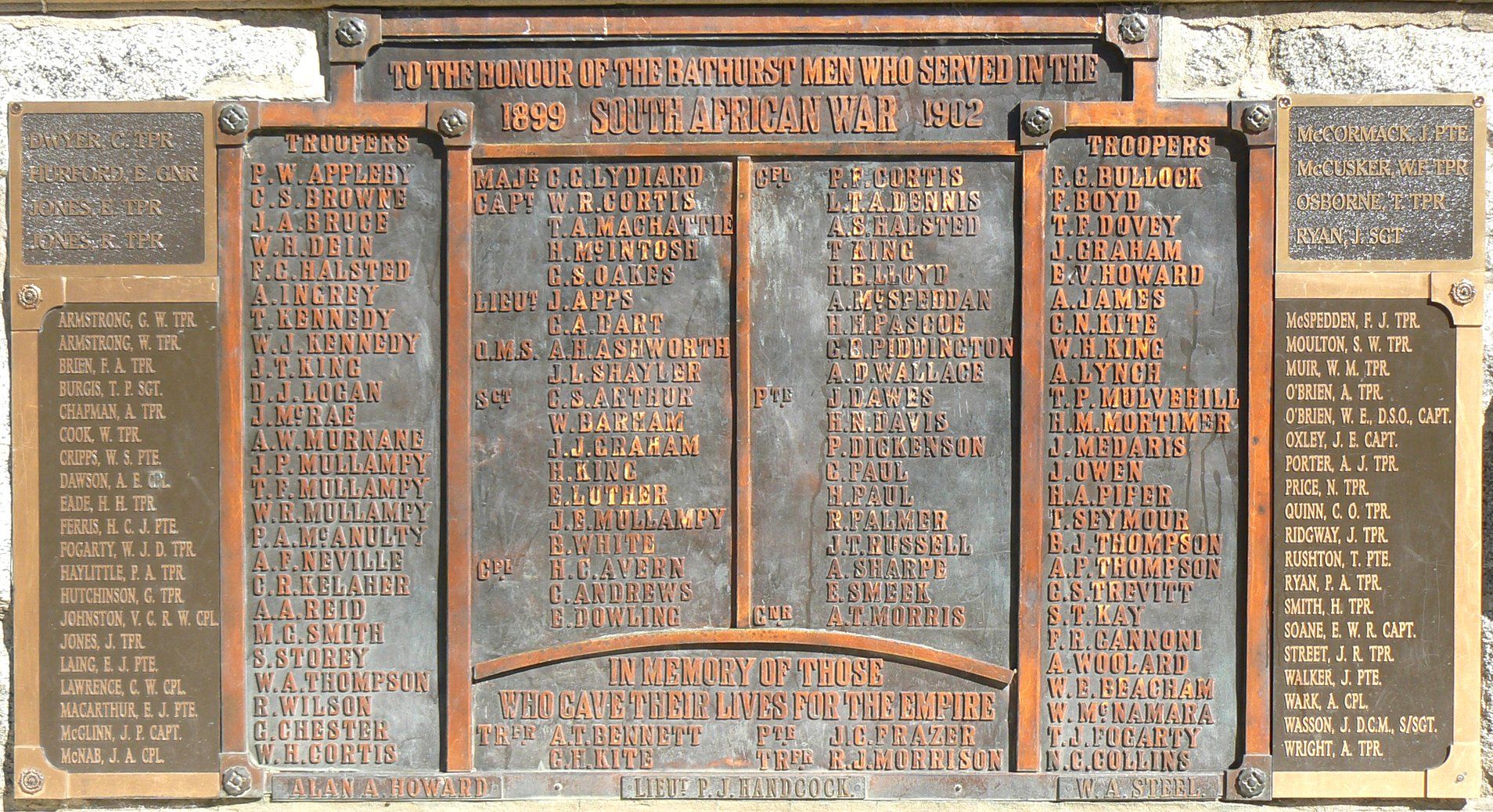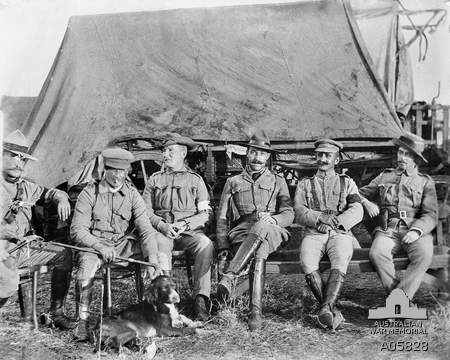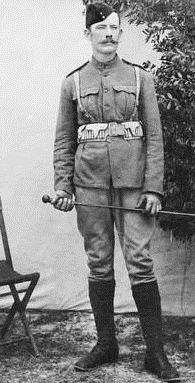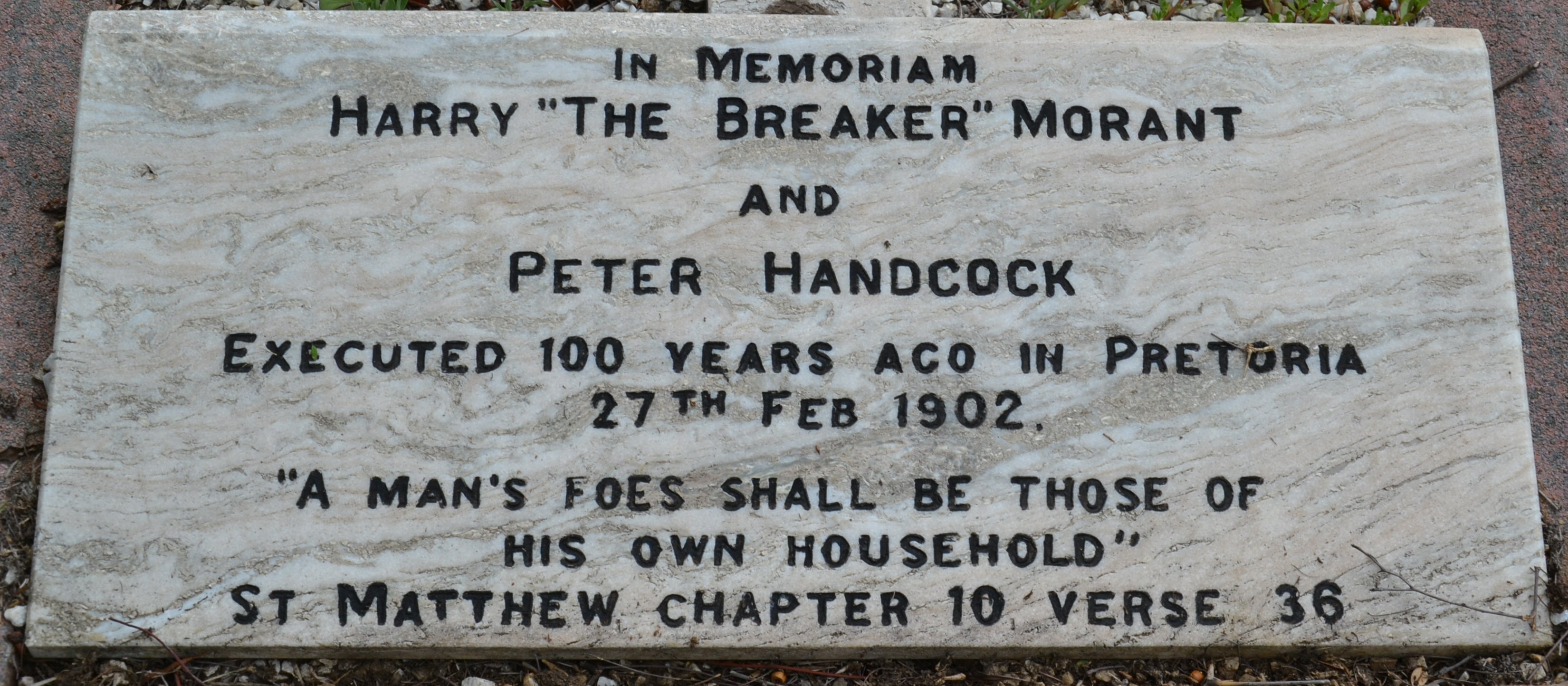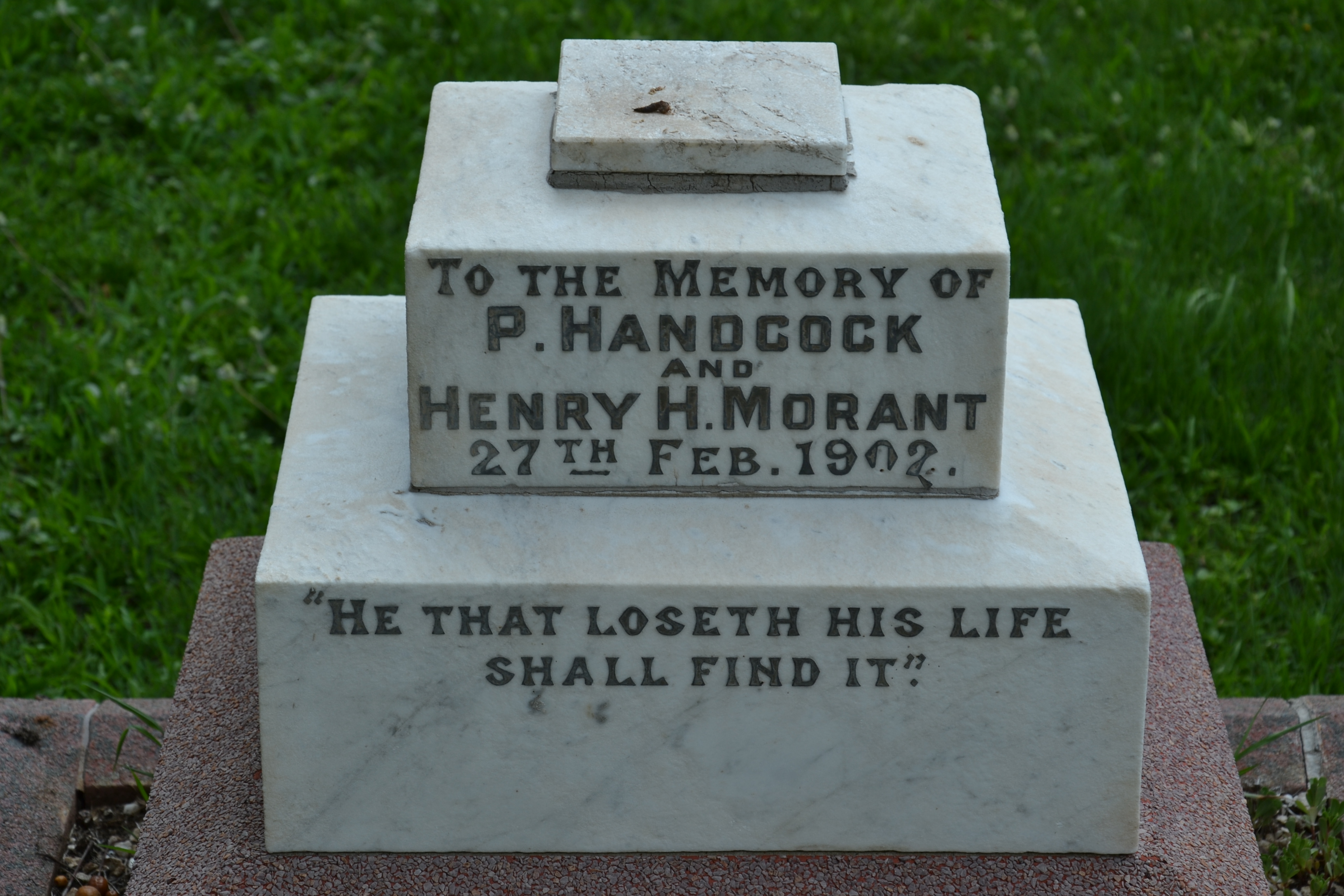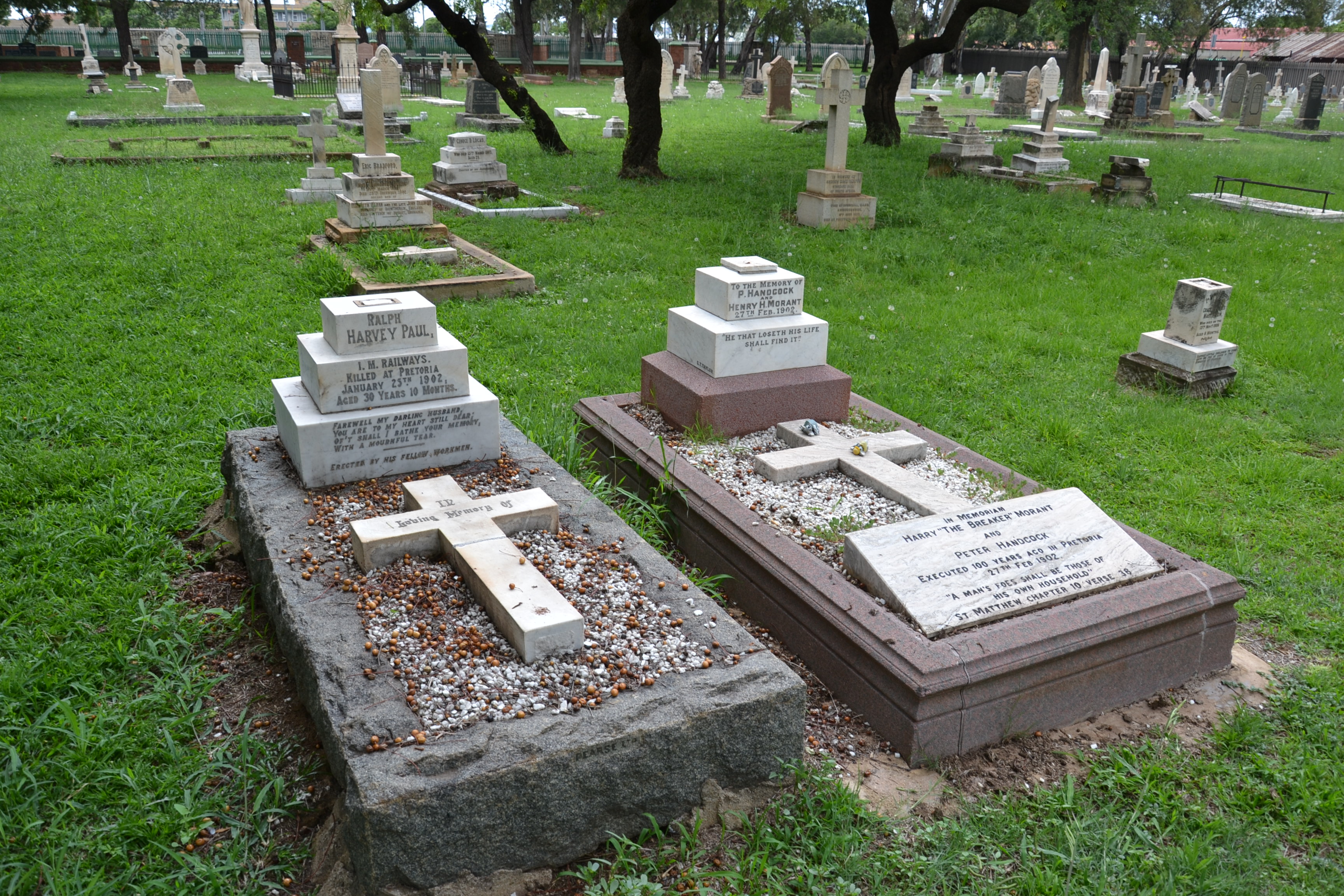Lt. Handcock married Bridget Alice Mary Martin on 15 July 1888 in The Catholic Cathedral, at Bathurst.
In 1899 Handcock answered the call to duty in The Boer War. He gave up his blacksmithing to join the 2nd Contingent of the 1st New South Wales Mounted Rifles. In February of 1900 he was promoted to farrier sergeant and was transferred to the Railway Services Police. In February 1901 he joined the Bushveldt Carbineers as a veterinary lieutenant. Created by the British as a live off the land guerilla warfare unit against the Boers, The Bushveldt Carbineers operated from Pietersburg, in the Northern Transvaal.
In June, 1901 now Lt. Handcock joined a detachment under Captain Robertson, a British officer, at Fort Edward in the Spelonken district. The fighting was intense, constant and brutal. Capt. Robertson's detachment lacked discipline and killed Boer prisoners instead of returning them to headquarters. Capt. Robinson was dismissed by Colonel F. H. Hall, who was The Bushveldt Carbineers Pietersburg area commandant. By late July Captain Frederick Percy Hunt, also British, was in command. Lt. H. H. "Breaker" Morant, a close friend of Hunt, was also at Fort Edward.
Capt. Hunt was killed in action and his body deliberatly and horrbly mutilated before death. He died of multiple cruel wounds. Left in command, Lt. Morant followed verbal orders from Lord Kitchener that all Boer prisoners were to be shot to death from then on. Take no prisoners.
Lt. Morant and his men afterwards swore that Hunt had received verbal orders from Lieutenant-Colonel H. Hamilton, General Kitchener's military secretary, not to take prisoners and that Hunt had reprimanded them for disobeying.
The The Bushveldt Carbineers rigorously hunted Boers. All prisoners, as well as many of those who previously surrendered, were shot to death. Lt. Morant praised the work of Lt. Handcock, and Col. Hall congratulated Lt. Morant for his detachment's success.
In August 1901 a German missionary named Heese, was murdered near Fort Edward. The missionary had been seen chatting to Boer prisoners who may have told him that they were afraid they would be shot. Lord Kitchener ordered a full investigation. Several Bushveldt Carbineers officers, including Lt. Handcock, Lt. Morant, and Lt. George Ramsdale Witton, were arrested and awaited a court of inquiry into the murder of Heese and the shooting of prisoners.
At the same time the British Government was trying to secure a peace treaty with the Boers and to avoid a larger war with the Germans. To cover things up, Colonel Hall, the commander of The Bushveldt Carbineers, was transferred to India. Lt. "Breaker" Morant accepted full responsibility for the shooting of twelve prisoners, saying that the others had just carried out his orders. Lt. Col. Hamilton denied having given Hunt any instructions regarding prisoners.
Despite a vigirous defense by Major J.F. Thomas, an inexperienced Australian solicitor from Tenterfield, New South Wales, Lt. Handcock and Lt. Morant were both found guilty of murdering the twelve prisoners, inciting to murder and of manslaughter. The charges against Handcock for Heese's murder and against Morant for instigating the crime were dismissed. Lt. Witton was sentenced to life imprisonment.
Both officers were shot by firing squad in Pretoria jail on 27 February 1902 and were buried in a single grave in Pretoria cemetery.
Lt. Handcock left behind his wife and three children.
The entire case raised a storm of protest in Australia. Lt. Witton was released from prison in 1905. In 1907, he wrote a book on the affair entitled "Scapegoats of the Empire: the True Story of Breaker Morant's Bushveldt Carbineers." Very few of the original editions exist today. The Australian Government aware that the book would condemn Lord Kitchener had all copies seized and destroyed.
This incident gave rise to a nation. Although Australia would answer the call for help from the British in WWI and WWII, they retained provost martial duties for themselves. Never again would they be subordinated to the British army. Morant and Handcock were the first Australian nationals executed for war crimes. The sentence, which had been carried out without the knowledge and consent of the Australian government, aroused bitter public controversy which carries on to this day.
Lt. Handcock and Lt. Morant were both buried in the same grave in the Pretoria cemetery, Pretoria South Africa. The grave has since been tended as a national shrine by the Australian government.
The story of Breaker Morant was made into a play and in 1979, a multiple award winning, Australian produced movie. That movie "Breaker Morant" Featured Edward Woodward in the title role and Bryan Brown as Lt. Peter Handcock. The film remains as one of the most powerful war movies and courtroom dramas ever made.
Lt. Handcock married Bridget Alice Mary Martin on 15 July 1888 in The Catholic Cathedral, at Bathurst.
In 1899 Handcock answered the call to duty in The Boer War. He gave up his blacksmithing to join the 2nd Contingent of the 1st New South Wales Mounted Rifles. In February of 1900 he was promoted to farrier sergeant and was transferred to the Railway Services Police. In February 1901 he joined the Bushveldt Carbineers as a veterinary lieutenant. Created by the British as a live off the land guerilla warfare unit against the Boers, The Bushveldt Carbineers operated from Pietersburg, in the Northern Transvaal.
In June, 1901 now Lt. Handcock joined a detachment under Captain Robertson, a British officer, at Fort Edward in the Spelonken district. The fighting was intense, constant and brutal. Capt. Robertson's detachment lacked discipline and killed Boer prisoners instead of returning them to headquarters. Capt. Robinson was dismissed by Colonel F. H. Hall, who was The Bushveldt Carbineers Pietersburg area commandant. By late July Captain Frederick Percy Hunt, also British, was in command. Lt. H. H. "Breaker" Morant, a close friend of Hunt, was also at Fort Edward.
Capt. Hunt was killed in action and his body deliberatly and horrbly mutilated before death. He died of multiple cruel wounds. Left in command, Lt. Morant followed verbal orders from Lord Kitchener that all Boer prisoners were to be shot to death from then on. Take no prisoners.
Lt. Morant and his men afterwards swore that Hunt had received verbal orders from Lieutenant-Colonel H. Hamilton, General Kitchener's military secretary, not to take prisoners and that Hunt had reprimanded them for disobeying.
The The Bushveldt Carbineers rigorously hunted Boers. All prisoners, as well as many of those who previously surrendered, were shot to death. Lt. Morant praised the work of Lt. Handcock, and Col. Hall congratulated Lt. Morant for his detachment's success.
In August 1901 a German missionary named Heese, was murdered near Fort Edward. The missionary had been seen chatting to Boer prisoners who may have told him that they were afraid they would be shot. Lord Kitchener ordered a full investigation. Several Bushveldt Carbineers officers, including Lt. Handcock, Lt. Morant, and Lt. George Ramsdale Witton, were arrested and awaited a court of inquiry into the murder of Heese and the shooting of prisoners.
At the same time the British Government was trying to secure a peace treaty with the Boers and to avoid a larger war with the Germans. To cover things up, Colonel Hall, the commander of The Bushveldt Carbineers, was transferred to India. Lt. "Breaker" Morant accepted full responsibility for the shooting of twelve prisoners, saying that the others had just carried out his orders. Lt. Col. Hamilton denied having given Hunt any instructions regarding prisoners.
Despite a vigirous defense by Major J.F. Thomas, an inexperienced Australian solicitor from Tenterfield, New South Wales, Lt. Handcock and Lt. Morant were both found guilty of murdering the twelve prisoners, inciting to murder and of manslaughter. The charges against Handcock for Heese's murder and against Morant for instigating the crime were dismissed. Lt. Witton was sentenced to life imprisonment.
Both officers were shot by firing squad in Pretoria jail on 27 February 1902 and were buried in a single grave in Pretoria cemetery.
Lt. Handcock left behind his wife and three children.
The entire case raised a storm of protest in Australia. Lt. Witton was released from prison in 1905. In 1907, he wrote a book on the affair entitled "Scapegoats of the Empire: the True Story of Breaker Morant's Bushveldt Carbineers." Very few of the original editions exist today. The Australian Government aware that the book would condemn Lord Kitchener had all copies seized and destroyed.
This incident gave rise to a nation. Although Australia would answer the call for help from the British in WWI and WWII, they retained provost martial duties for themselves. Never again would they be subordinated to the British army. Morant and Handcock were the first Australian nationals executed for war crimes. The sentence, which had been carried out without the knowledge and consent of the Australian government, aroused bitter public controversy which carries on to this day.
Lt. Handcock and Lt. Morant were both buried in the same grave in the Pretoria cemetery, Pretoria South Africa. The grave has since been tended as a national shrine by the Australian government.
The story of Breaker Morant was made into a play and in 1979, a multiple award winning, Australian produced movie. That movie "Breaker Morant" Featured Edward Woodward in the title role and Bryan Brown as Lt. Peter Handcock. The film remains as one of the most powerful war movies and courtroom dramas ever made.






